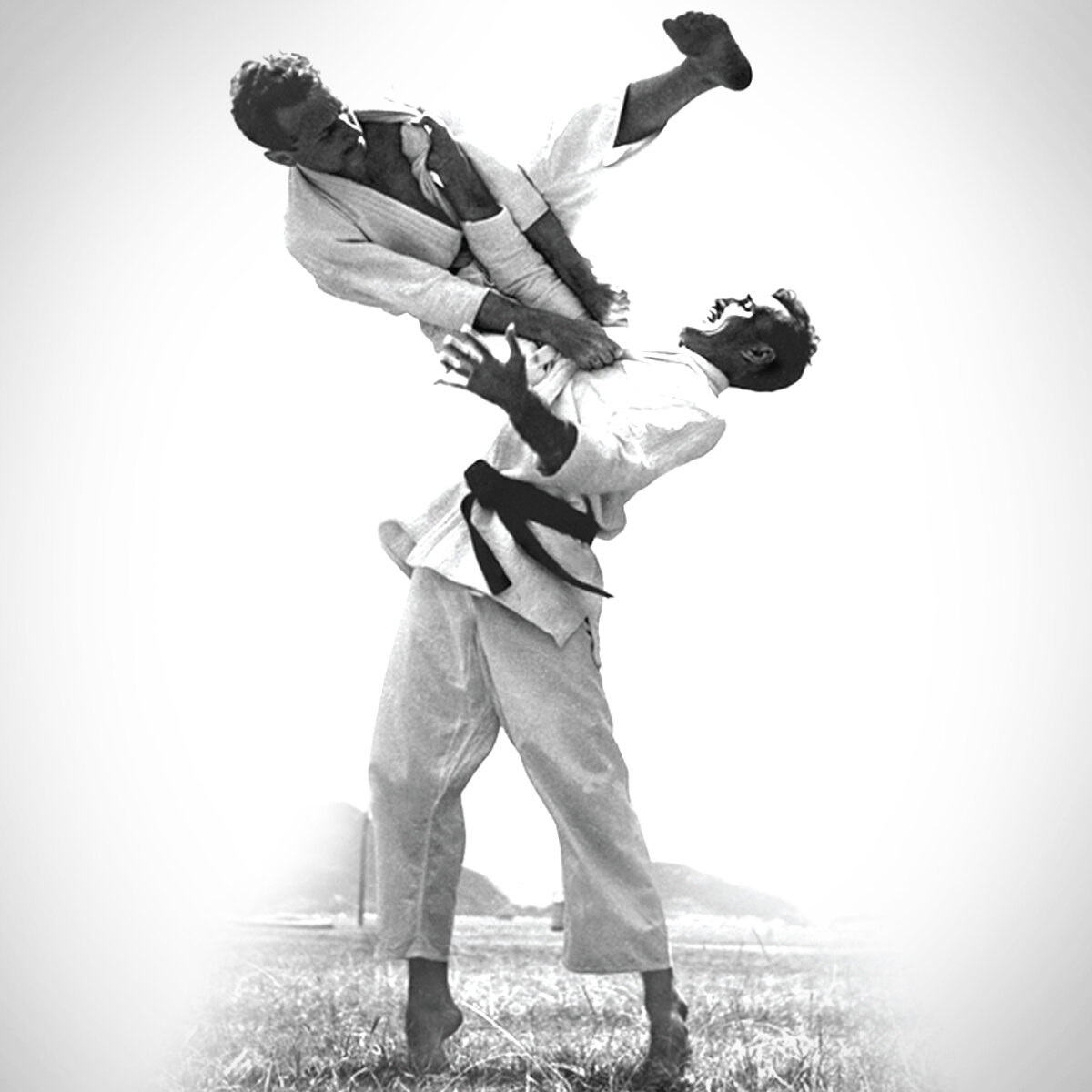THE HISTORY of Jiu Jitsu
Brazilian Jiu-Jitsu (commonly known as BJJ) is a martial art and combat sport that focuses on grappling and especially ground fighting. It is a derivative of early 20th century Kodokan Judo which was itself then a recently-developed system (founded in 1882), based on multiple schools of Japanese Jiu-Jitsu later modified and further developed by the famous Gracie Family of Brazil.
BJJ promotes the principle that a smaller, weaker person can successfully defend themselves against a bigger, stronger assailant using leverage and proper technique; most notably, by applying joint-locks and choke-holds to defeat the other person.
Jiu-Jitsu in Brazil
Gracie Jiu-Jitsu originated in the 1910's when Japanese JuJitsu (also spelled "JuJutsu") and Judo master Mitsuyo "Count Koma" Maeda visited Brazil. He befriended Gastão Gracie, an influential Brazilian businessman of Scottish decent. Maeda agreed to teach traditional Japanese JuJitsu to Gastão's eldest son, Carlos Gracie. Maeda soon left Brazil, but the Gracie brothers continued practicing Jiu-Jitsu.
The Development of Brazilian Jiu Jitsu
Although all of Gastão's sons trained Jui Jitsu, the youngest and smallest of the brothers, Helio Gracie, made the refinements that created the most efficient martial arts system in the world. Helio noticed that many traditional techniques were not practical for his 135-pound physique, so he began experimenting to find ways for a smaller person to execute the moves. Through a lifetime of trial and error, Helio Gracie modified the techniques Maeda had taught Carlos, invented new ones, and developed a system of Gracie Jiu-Jitsu that would enable him to defeat larger and stronger opponents, which forever change the landscape of the traditional martial arts world.
Helio knew that merely practicing moves against a willing partner would not ensure the effectiveness of his style. As such, he tested his techniques in numerous no-holds-barred Vale Tudo (translated as everything goes) and challenge matches, throwing out or modifying the techniques he found to require too much athleticism or strength. Despite his small physical stature, Helio gained notoriety in Brazil as the country's top fighter. Helio Gracie continued teaching his art in Brazil and around the world until the age of 95. Carlos and Helio had many sons, including Carlson Gracie, Carlos Gracie Jr., Rolls Gracie, Rorion Gracie, and Rickson Gracie, who carried on the techniques and traditions of Jiu Jitsu. Still, it was Helio's son Royce (pronounced "Hoyce") who ushered in a revolution in the world of traditional martial arts in the early 1990s, competing in the Ultimate Fighting Championship (UFC) and becoming the driving force for modern-day mixed martial arts.
In addition to the Gracie family, other Brazilians contributed to the development of Jiu Jitsu in another part of Brazil. Among the most recognized in history is another Count Koma student, Luiz França. Not much is known about França except for his focus on self-defense and his influence on a young man, Oswaldo Fadda. Fadda is known as the key figure in leading the non-Gracie development of Jiu Jitsu. His goal was to make Jiu Jitsu available for all social classes, especially the poorer areas of Brazil known as the “favelas.” This was contrary to the Gracie’s focus on promoting Jiu Jitsu to only the upper echelon of society in Brazil. The two camps would challenge each other, with Fadda’s camp emerging victorious. This gained Fadda both popularity and skeptics. Fadda’s academy would also face challenges from others to test their skills similar to the Gracie’s. It is said that Jiu Jitsu never lost a fight. Oswaldo Fadda spent his life dedicated to the advancement of Jiu Jitsu until his passing. His legacy is carried by many of today’s great Jiu Jitsu practitioners and teams, such as Julio Cesar, Denilson Pimenta, Rodolfo Viera, Nova Uniao, and GFTeam.
Ultimate Fighting Championship
The early UFC's asked a single question, “Which style of martial arts is most effective in a real fight?" The events were no-holds-barred with no weight classes and no time limits. Fighters were allowed to use any strikes, takedowns, or submissions they pleased, and the only way to win a fight was by knockout or submission. Spearheaded by the Gracie Family, Royce Gracie was the youngest and skinniest and chosen to represent them in the octagon. The 175-pound Royce Gracie quickly defeated much heavier and stronger fighters from all martial arts styles, such as Judo, Tae Kwon Do, Karate, Wrestling, Boxing, Shootfighting, and Kung Fu. Royce's success was convincing proof of Gracie Jiu-Jitsu's superiority over other martial arts and quickly made an impact on the way people practice martial arts all around the world.
Jiu Jitsu Today
Today, Jiu Jitsu is one of the fastest and most popular self-defense and martial arts methods. With the mass movement and propagation of mixed martial arts, Jiu Jitsu has gained much notoriety and is practiced by many people of all ages throughout the world. It is considered the most efficient form of self-defense and has been adopted by many military and law enforcement agencies.
As a sport, Jiu Jitsu continues to evolve and innovate. Jiu Jitsu has transcended Brazil and has experienced significant contributions over the years from practitioners and competitors from different parts of the work, such as America, Europe, Australia, and others.
Jiu Jitsu is often referred to as “human chess” due to its strategy, critical thinking, and planning, in addition to physical movement and exercise. Many individuals have also depended on Jiu Jitsu as a form of therapy to combat mental illness, social anxieties, depression, stress, and other diseases, along with improving health and fitness conditions. There are no limitations to starting to train. Neither age nor physical attributes can prevent individuals from benefiting from Jiu Jitsu. All it takes is the first step on the mats to change your life.
If you are ready to begin your journey, click here.



